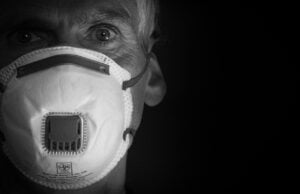
Watchdog Finds The 10 Least Affluent Congressional Districts Received 56,600 Fewer Loans And Up To $13.3 Billion Less In Funding Under The SBA’s Paycheck Protection Program Than 10 Richest
Q2 2020 hedge fund letters, conferences and more
Poorest Congressional Districts Receiveed Less PPP Loans Than The Wealthiest Districts
WASHINGTON, D.C. — As Congress continues to negotiate the next coronavirus aid package, including a possible extension and changes to the Small Business Administration’s (SBA) Paycheck Protection Program (PPP), government watchdog Accountable.US released a new analysis today finding the 10 poorest congressional districts received over 56,600 fewer PPP loans than the 10 wealthiest districts — amounting to a $13.3 billion gulf.
The poorest districts were also disproportionately Black, averaging a 41.8-percent Black population compared to the wealthiest districts’ average of 6.3-percent. It is yet more evidence that the CARES Act program billed as a lifeline for struggling small businesses was poorly designed and mismanaged by the Trump administration, allowing tens of thousands of business owners in need to be left behind — especially in communities of color — as they prioritized those with the most resources and connections.
“As the health crisis and recession grow worse, Congress has no excuse for not immediately passing another relief package,” said Accountable.US President Kyle Herrig. “But lawmakers must also learn from their mistakes and ensure that promised resources actually make their way to underserved communities and small businesses across the country, not just to the wealthy and well-connected.”
Key Findings:
- The 10 poorest congressional districts (NY-15; KY-5; MI-13; MS-2; AL-7; SC-6; FL-5; NC-1; AZ-7; LA-5) received over 56,600 fewer PPP loans than the 10 wealthiest districts, totaling up to $13.3 billion less — and an average of $35,566 less per loan.
- The poorest districts were also disproportionately Black, averaging 41.8-percent Black compared to the wealthiest districts’ average of 6.3-percent Black.
- When comparing the wealthiest district (CA-18) with the poorest (NY-15), the wealthiest got 8,763 more loans – a potential difference of up to $1,373,160,494.
These unacceptable results follow a pattern of unequal distribution of PPP funds. A previous national analysis from Accountable.US found the 10 congressional districts with the highest percentage of Black residents received 35% less in PPP loan funds than the 10 CDs with the lowest percentage, a $12.9 billion disparity.
Accountable.US has been tracking PPP spending as part of its COVIDBailoutTracker.com project, and has outlined priorities for Congress to ensure a fairer and more transparent system for getting relief to the small businesses that need it most. Earlier this month, the nonpartisan watchdog called on the Office of the Inspector General of the U.S. Small Business Administration to investigate the Trump administration’s mismanagement of the PPP, which has distributed hundreds of billions of dollars in taxpayer money with little oversight or accountability.
Accountable.US is a nonpartisan watchdog group that exposes corruption across all levels of government.
© 2020 Accountable.US | Contact Us
The post Poorest Congressional Districts Shortchanged By PPP appeared first on ValueWalk.
